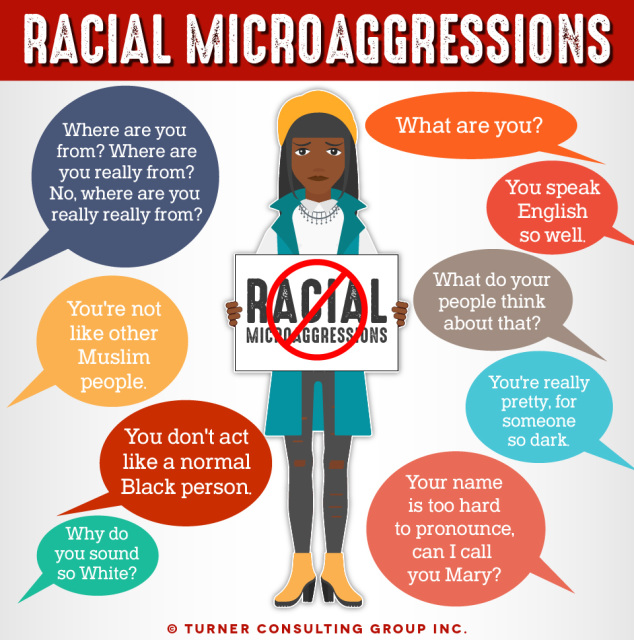Some corporations have come out in support of Black Lives Matter, and they give great detail their support of diversity. However, if we are to address racism in the workplace, we need to discuss racial microaggressions — something that businesses rarely address.
Microaggressions are defined as “brief and commonplace daily verbal, behavioral, and environmental indignities, whether intentional or unintentional, that communicate hostile, derogatory, or negative slights and insults to marginalized individuals and groups.” The “micro” in microaggression refers to person-to-person interactions, while “macro” refers to systemic racism. Systemic racism includes social structure and institutions.

Racial microaggressions are constant stings and barbs. They negatively impact job satisfaction, self-esteem, and mental health issues of your black employees. They can also impact the physical health.
Racial microaggressions include white employees assuming that a black employee is of a lesser employment status, asking a black coworker to get you a cup of coffee or copies, asking a black woman if you can touch her hair, requesting a white supervisor because you think a black supervisor “isn’t a good fit,” asking a black employee how they got their job, commenting to a black coworker that he is “so articulate,” or referring to a black employee as “you people.”

An example of a microaggression is expressing a belief that race doesn’t make a difference in success in life. For example, “If you just work harder, you’ll succeed.” Another example is a white male saying, “I succeeded because I wasn’t lazy and didn’t rely on society to help me.” The meaning behind these statements is, if I can succeed on my own, you can too — there is nothing stopping you. However, these statements don’t take into account the entitlement one experiences when they are white. It is simply easier to get hired if you are white, based entirely on your race — not your competence.
Microaggressions come in three forms: microassaults, microinsults, and microinvalidations.
Microassaults happen when a person purposefully behaves or speaks in a racist way, or uses racist symbols. An example is when a coworker makes a racist joke, is aware that the joke is racist, yet claims that the joke is harmless. It also includes never acknowledging a black employee during a meeting, ignoring a black coworker’s attempts at sharing an idea, having a manager “keep a close eye” on a black employee, or only giving white employees their requested days off.
Microinsults are verbal and nonverbal behaviors that demean a person’s race, and express rudeness and insensitivity. People that use microinsults can either be aware or unaware of their racism. An example is a white coworker asking a black coworker how she was able to get her job. The implied meaning is, you didn’t get the job on your own merits.
Microinvalidations are forms of communication that attempt to negate, exclude, or ignore a person based on his or her race. People that give out microinvalidations usually deny that they were being racist. For example, a white coworker may ask a black coworker where she is from — something she doesn’t ask of her white coworkers. The implied meaning is, you don’t belong.
One of the struggles of facing microinsults and microinvalidations in the workplace is that white coworkers may gaslight black coworkers and deny that a comment was racist. They may tell a black coworker that they are “being too sensitive.”

If you are white, here’s how you can fight microaggressions in the workplace. First, become aware of your own biases and racism, and start confronting those beliefs. It is only when we confront our issues that we can truly understand what others experience.
Call out microaggressions when you see them. There is no room for microaggressions in the workplace — or anywhere for that matter. If you are white, you have the entitlement of being able to speak out with fewer repercussions than if you were black. Tell the person exhibiting microaggressions that it is not acceptable. Even if someone denies that their behavior was racist, they are still completely responsible for their comments and actions.
Educate employees, coworkers, and supervisors about microaggressions. Explain the different types, and give examples. Strictly enforce an anti-racism policy in your workplace. The general rule is if you think a behavior might have been racist, it probably was. If appealing to basic human rights and decency isn’t enough (and it should be enough), consider your company’s liability if you continue to have a racist person in your workplace. “I didn’t think it was racist,” is not a valid defense.

Comments (2)